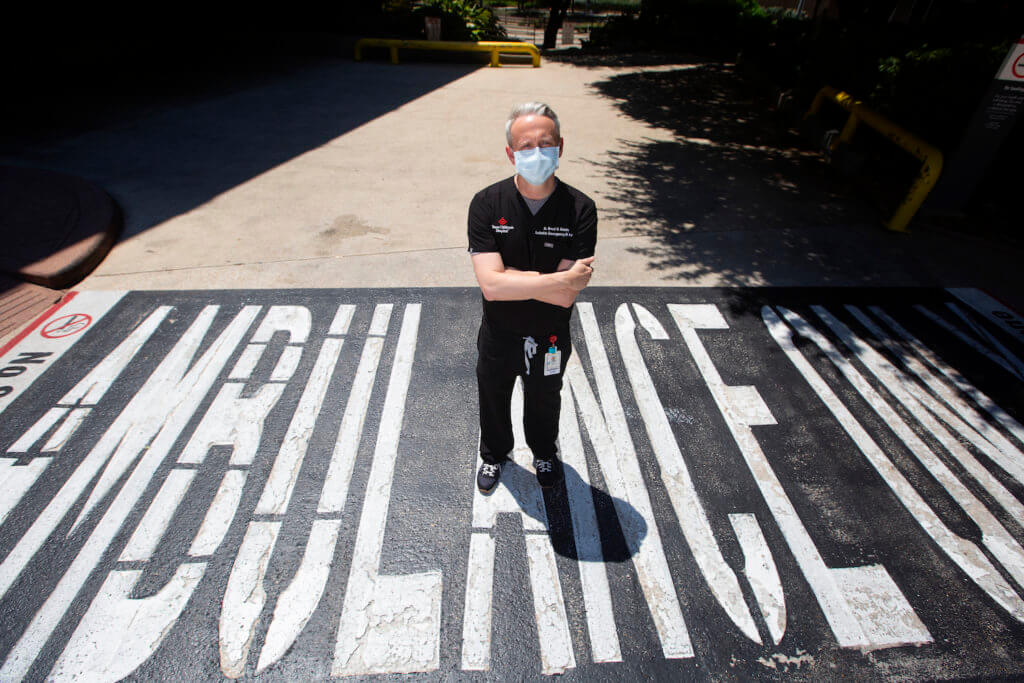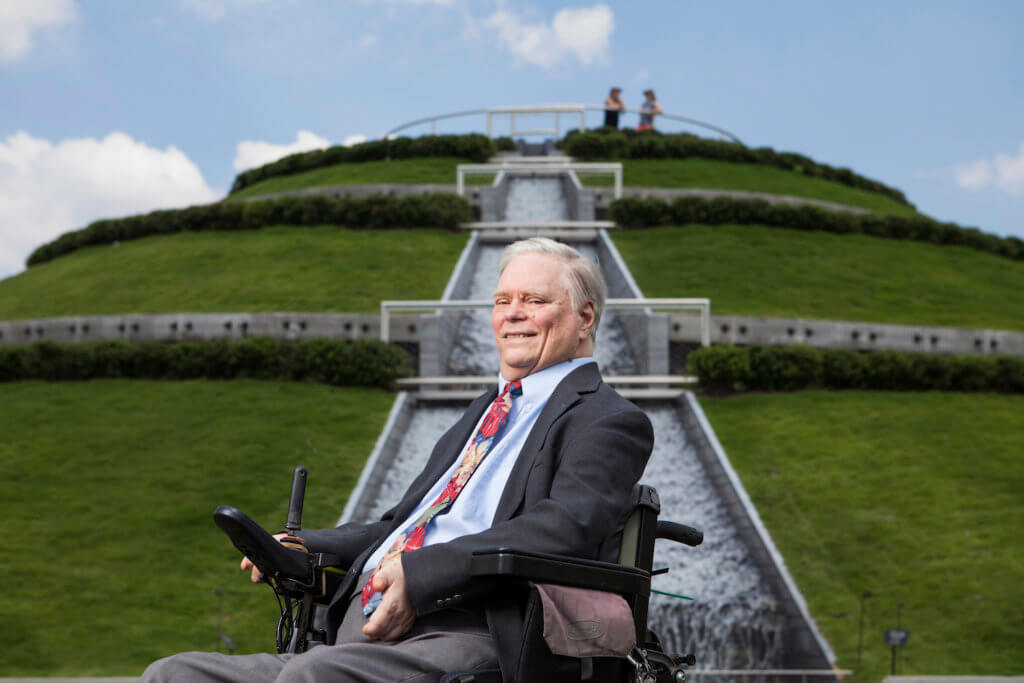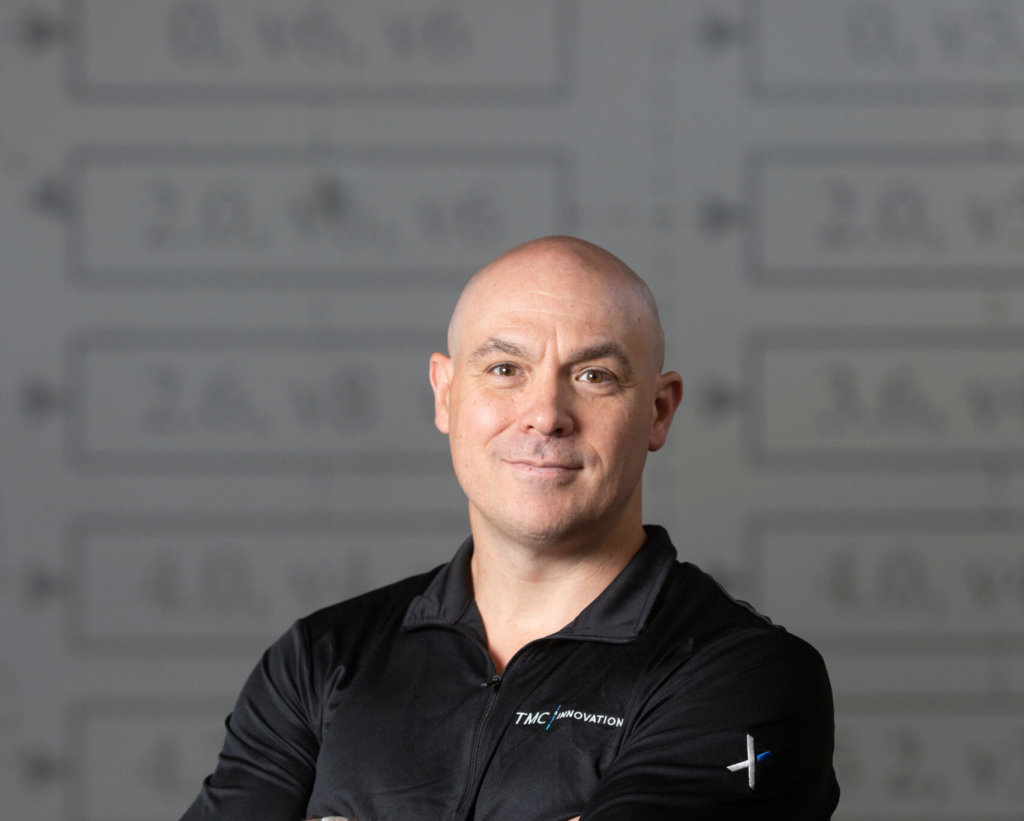Houston Methodist surgeons reconstruct a colon using minimally invasive robot
In Fall 2013, Carter Tomsu was a Rice University freshman in the middle of his first round of finals when he began experiencing unusual bowel movements. The then-18-year-old had to use the restroom nearly 30 times a day, excreting mostly blood or mucus. He dropped more than 20 pounds in a few weeks.
His doctors diagnosed him with ulcerative colitis, or UC, an inflammatory bowel disease that causes the lining of the colon to develop ulcers that produce pus and mucus. This can lead to abdominal discomfort and frequent diarrhea.
“For the typical person who comes in seeking surgery for UC, the bathroom is like jail,” said Eric Haas, M.D., chief of the division of colon and rectal surgery at Houston Methodist Hospital. “They can’t get out of the bathroom. There’s urgency. They go to the bathroom, get up and 10 minutes later feel an awful urge to go back. It’s miserable because you always feel like you have to get back to the bathroom.”
Tomsu joined the Rice football team as a quarterback during his freshman year, but his symptoms became too severe for him to continue to play. His condition affected his academic performance and caused his grades to drop.
In addition, he was hospitalized twice for Clostridium difficile colitis, an infection known as C. difficile that can cause symptoms ranging from diarrhea to life-threatening colon inflammation. He received fecal transplants to treat the infection.
READ MORE: Fecal transplants as a treatment for C. difficile
Ultimately, the illness overwhelmed Tomsu. He made the difficult decision to withdraw from Rice and returned home to Austin to live under the care of his parents.
“I had incontinence so bad that I would always be looking for a restroom,” said Tomsu, now 22. “Even if we’re driving 15 minutes to a restaurant, I would be concerned about if something happened in the middle of the drive or at a sporting event and there’s a line outside the restroom.”
Tomsu participated in three clinical trials over the span of four years and tried medication after medication, but nothing worked. After a colonoscopy revealed precancerous polyps that would eventually develop into colon cancer, Tomsu and his family decided that a higher power was directing them to a surgical intervention that might solve the problem.
“This was God telling me that it’s time to have the surgery. We had been fighting for so long and left no stone unturned,” Tomsu said. “I knew it was going to happen at some point in my life whenever some medication would stop working, but I never got any relief from medication. Surgery is the first relief I’ve felt in four or five years.”
Rerouting the plumbing
Haas performed the “J pouch” surgery using the da Vinci Xi surgical robot to reconstruct Tomsu’s intestines. During the first stage, performed in January 2018, Haas removed Tomsu’s entire colon and rectum through a tiny 1.5-inch incision in the belly button. The surgeon created a J-shaped pouch using the last few inches of the small intestine and attached that to the top of the anal canal. This effectively “reroutes the plumbing” without committing Tomsu to the lifelong use of an ileostomy bag, Haas said. During the second leg of the surgery on April 16, Haas reattached both ends of the bowel.
“Traditionally, you’d cut the patient wide open, remove everything first and then do all the reconstruction,” Haas said. “But with modern medicine and innovations, we do it all minimally invasively. Because we have to create this pouch and such specific technical considerations, the robotic technology helps us overcome a lot of barriers and has become our preferred approach to remove the colon … and reconstruct the colon so that he can have normal function.”
Colon reconstruction and the J pouch surgery have been around for years, but the robot-assisted, minimally invasive approach using the da Vinci Xi only recently emerged as an option. This approach boasts many advantages over traditional methods, including increased safety, a decreased chance of needing a transfusion and lower risk of surgical site infection. Most importantly, patients experience significantly less pain and, as a result, require fewer painkillers.
Considering the opioid epidemic sweeping the nation, Haas added, the ability to treat a patient’s post-surgical pain using non-opioid medications is a major benefit.
“After colon surgery, you’re in pain. We’ve noticed an amazing reduction in the need of opioids after surgery,” the surgeon said. “In fact, most times we send patients home with just Tylenol or Advil. We don’t even take the risk of getting them hooked on opioids.”
Tomsu is expected to heal in six weeks. Then, he will have his ileostomy bag and stitches removed—finally ending his long battle with UC.
“Once you’re done with surgery, you don’t need to be treated any more medically,” Haas said. “It cures the disease.”
After the surgery, bowel movements are reduced from 30 daily to four to six times a day.
“[It] may seem like a lot, but to the patients, it’s amazing because you can eat, have one or two movements, and be done until your next meal,” Haas said. “It’s a tremendous difference and the lifestyle is a 180-degree turn.”
Paying it forward
Tomsu was accepted to The University of Texas in Austin and, depending on his recovery, will resume his education in this summer or fall.
Although he once had the aspiration to play football professionally, Tomsu has decided “to protect my brain and become a doctor,” he said. Inspired by his personal experience with doctors and caregivers, he now plans to go to medical school to become a pediatrician.
“This has made it more of a goal of mine to accomplish. I know I can empathize with someone going through it,” he said. “If I can make their journey easier, then mission accomplished.”
Tomsu is eager to close this chapter of his life and proceed to his future, but he appreciates how the past five years have shaped his character.
“It was pretty alienating … having to live at home and putting life on pause, but it’s made me who I am and I have to be thankful,” Tomsu said. “If I can do this, I can do anything.”




